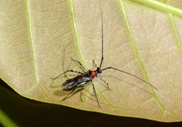Cashew plantation in Odisha attacked by tea mosquito bug
Context
Tea mosquito bugs have attacked acres of cashew crops in Odisha and climate change may be to blame.
Important facts about the Crop
- Scientific name: Anacardium occidentale
- Cashew is native of South Eastern Brazil, from where it was introduced to Malabar coast of India in the sixteenth century.
- The cashew tree is a low spreading, evergreen tree with a number of primary and secondary branches.
- Climate: It is a hardy tropical plant and does not exact a very specific, climate.
- Type of soil: Cashew is cultivated on a wide variety of soils in India like laterite, red and coastal sandy soil. To a limited extent, it is also grown on black soils. It can be also grown in hill slopes in virgin organic matter rich soils.
- Producing states: Commercial cashew cultivation is practiced in eight states, primarily on the west and east coasts, namely Andhra Pradesh, Goa, Karnataka, Kerala, Maharashtra, Odisha, Tamil Nadu, and West Bengal.
- Odisha is the third-largest state in cashew cultivation.

- Odisha is the third-largest state in cashew cultivation.
Tea mosquito bug
|


